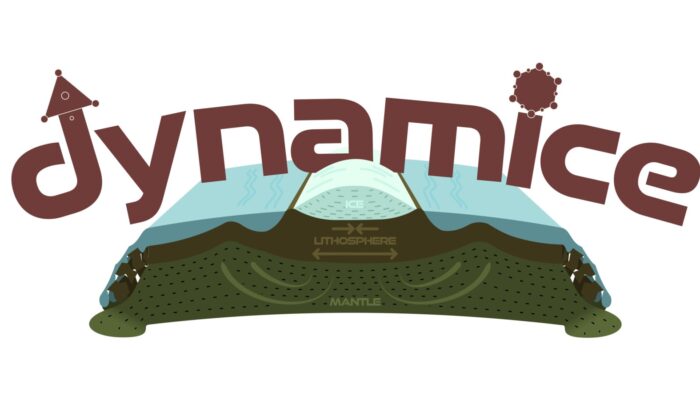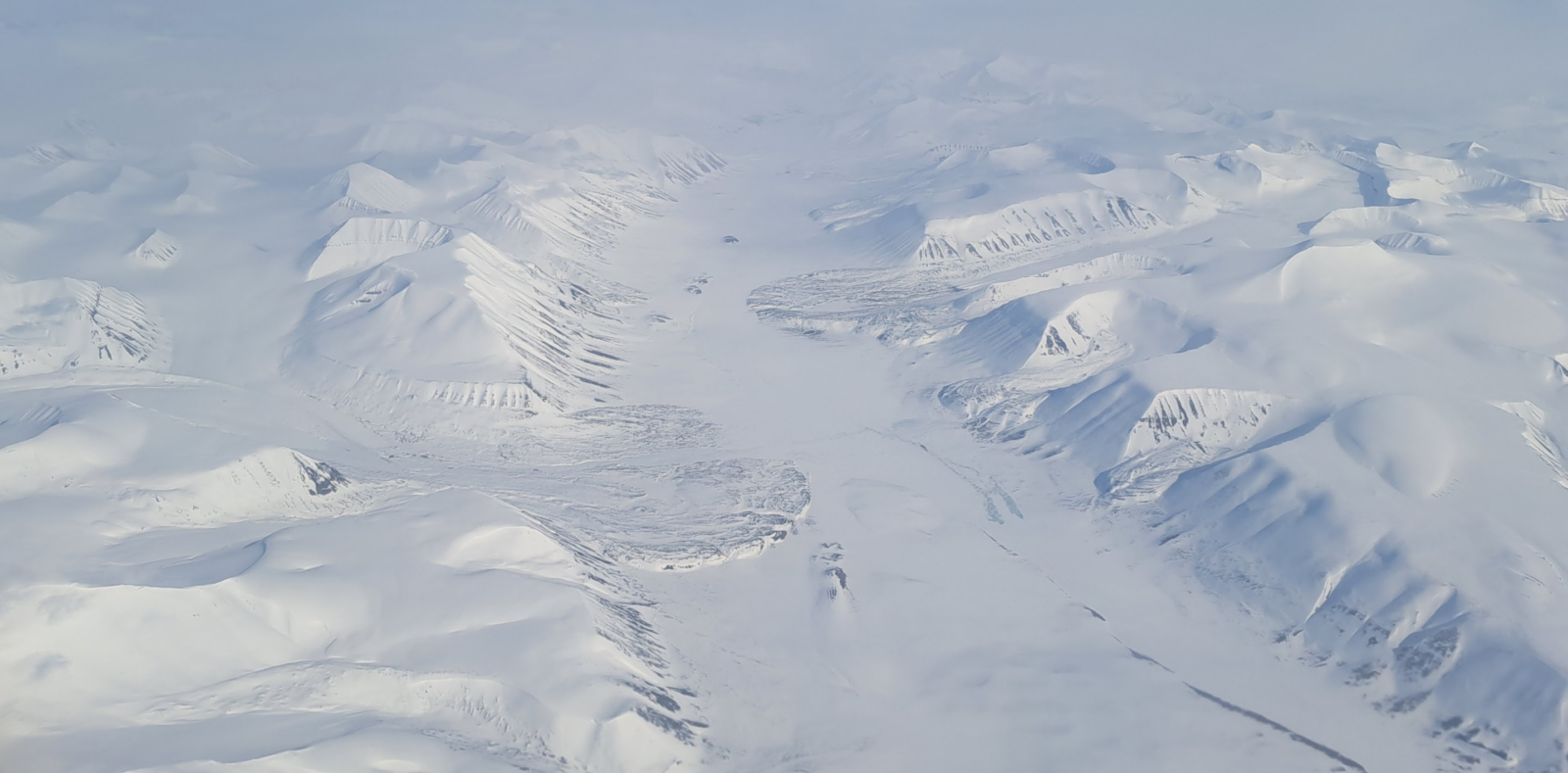
In the 2024 ERC Starting Grant call, the European Research Council received nearly 3,500 proposals, of which approximately 14% were awarded funding. Among the 20 projects funded in the field of Earth System Sciences is DYNAMICE, led by Ágnes Király, the 2023 recipient of the EGU GD Division Outstanding Early Career Award. Through this blog, Ágnes will introduce us to her project.
The vast ice sheets covering Greenland and Antarctica are melting at an alarming rate, contributing to rising sea levels worldwide (IPCC, 2023). Understanding how these ice sheets move and lose ice mass is crucial for predicting future sea-level rise and its impact on our world, especially on coastal communities. DYNAMICE sets out to investigate the complex interactions between ice sheets and the Earth’s mantle, with a focus on a phenomenon known as anisotropic viscosity.
What is Anisotropic Viscosity and Why Does It Matter?
Imagine a slice of cake. You’ll find it much easier to take the top layer of sponge off by sliding it along a layer of cream, than lifting it straight up. This is because a layered cake exhibits anisotropic behavior, meaning its properties change depending on the direction we measure or observe them.

Figure 3: Crystal structure and slip system activity of olivine (left) and ice (right). Pink colours refer to weak slip systems and green to blue colours refer to slip systems that are hard to activate. t0r is the relative value of the critical resolved shear stress on each slip system with respect to the weakest one ( based on Castelnau et al., 1996; Hansen et al., 2016)
Anisotropic viscosity refers to the phenomenon where materials deform differently depending on the direction of stress applied to them. This behavior is often attributed to the intrinsic properties, such as crystallographic structure, of materials such as ice and olivine, the main building blocks of ice sheets and the Earth’s mantle respectively.
Why is this important? Anisotropic viscous behavior has a potential to significantly affect how ice sheets move and how the Earth’s mantle responds to the melting of these massive ice sheets. For example, if the mantle beneath a melting ice sheet is weak in a certain direction, the land might uplift more rapidly, raising the ice sheet to higher altitudes while also decreasing its slope, and thus potentially slowing down ice movements (e.g. Whitehouse et al., 2019).
Connecting the Microscopic World of Crystals to the Large-Scale Flow of Ice and Rock
Anisotropic viscosity in ice and in the mantle originates from the crystallographic properties inherent to their constituent minerals. The way this micromechanical behavior of individual grains translates to large-scale (macroscopic) behavior mainly depends on the texture of the rock or ice, which refers to the orientation of the individual grains with respect to each other and to the applied stresses. DYNAMICE seeks to bridge the gap between the microscopic world of crystals and the large-scale flow of ice and rock and create a framework where texture development, anisotropic viscous behavior and large scale dynamics can be modelled together both for ice and mantle processes. For this we will use ASPECT where texture development can be tracked on advected particles. Parameters describing the texture can be then interpolated and mapped directly into anisotropic viscous parameters, which in turn define the rheological behavior of the material.
We expect that texture evolution and anisotropic viscosity can significantly impact the way ice flows and the Earth’s mantle responds to the removal of ice load during glacial isostatic adjustment (GIA).
Anisotropic flow in Ice
DYNAMICE will consider the temporal and spatial variation of ice textures and their varying effects of anisotropic viscosity in different regions of the ice sheet. For example, at ice divides, where snowfall accumulates and compresses into ice, AV may influence the depth of isochrons (Durand et al., 2006). This is important for scientists who study past climates using ice cores. Further, in ice streams, which are like fast-flowing rivers of ice within the ice sheet, AV can vary greatly across the width and depth of the stream. Understanding this variation can help researchers predict ice velocity and potential ice loss. Finally, at ice shelves, which are floating extensions of ice sheets, incoming ice texture can cause hardening, and it’s unclear how quickly this texture changes to allow for viscous deformation within the shelf. The thinning and breaking off of ice shelves, driven by warming ocean currents and carving, can significantly impact stresses within the ice streams feeding into them, that in turn effects the anisotropic viscous behavior of ice and thus how the ice flows.
By modeling anisotropic ice flow, the DYNAMICE project will be able to contribute valuable insights into the spatial variability of ice textures and their role on the past, present and future behavior of ice sheets. Our aim is to provide tools and further our understanding on the reasons behind spatial and temporal variability of ice discharge from the Antarctic and Greenland ice sheets. This research will have implications for predicting future sea level rise, understanding the response of ice sheets to climate change, and interpreting data from ice cores used to reconstruct past climates. The project will also bridge the gap between geodynamics and ice modeling communities by developing a shared framework for understanding and modeling AV, leading to a more holistic view of Earth system processes. To do so, our aim is to integrate ice sheet models into one of our big community softwares – ASPECT.
Modeling Mantle Dynamics
The project will also examine how anisotropic viscosity affects glacial isostatic adjustment (GIA), the Earth’s response to the changing weight of ice sheets. When an ice sheet forms the lithosphere bends under its weight and the asthenosphere flows away from beneath the loaded lithosphere. When the ice melts this reverses, the lithosphere unbends and the asthenosphere flows back to fill up the place of the lithosphere. The viscosity of the asthenosphere therefore plays a significant role on how fast the lithosphere and surface uplifts after the melting of ice (Weerdesteijn et al., 2022). As textures formed in the mantle can affect the viscosity by one to two orders of magnitude we aim to test which pre-existing textures aid vs slow down surface uplift, and deduce implications based on observed seismic anisotropy patterns beneath the big ice sheets.
Putting It All Together: Coupling Ice Sheet and Mantle Models
The ultimate goal of the DYNAMICE project is to integrate ice sheet and mantle models to study the intricate interactions among ice flow, glacial isostatic adjustment (GIA), texture development, and anisotropic viscosity. To achieve this, the project will utilize geophysical observations from satellites and ground-based instruments to create realistic model setups. These observations will help define the initial conditions for the models, including the shape and thickness of the ice sheet, the thickness of the lithosphere, and the crystallographic orientation of olivine grains in the asthenosphere.
By identifying critical areas where anisotropic viscosity in the ice and/or in the mantle has a significant feedback to ice mass loss, DYNAMICE will provide valuable insights for decreasing uncertainties for predicting future sea level rise and its impact on our planet.
References:
Castelnau, O., Duval, P., Lebensohn, R.A., and Canova, G.R., 1996, Viscoplastic modeling of texture development in polycrystalline ice with a self-consistent approach: Comparison with bound estimates: Journal of Geophysical Research: Solid Earth, v. 101, p. 13851–13868, doi:10.1029/96JB00412.
Durand, G., Gillet-Chaulet, F., Svensson, A., Gagliardini, O., Kipfstuhl, S., Meyssonnier, J., Parrenin, F., Duval, P., and Dahl-Jensen, D., 2006, Change of the ice rheology with climatic transitions – implication on ice flow modelling and dating of the EPICA Dome C core: Climate of the Past Discussions, v. 2, p. 1187–1219.
Hansen, L.N., Conrad, C.P., Boneh, Y., Skemer, P., Warren, J.M., and Kohlstedt, D.L., 2016, Viscous anisotropy of textured olivine aggregates: 2. Micromechanical model: Journal of Geophysical Research: Solid Earth, v. 121, p. 7137–7160, doi:10.1002/2016JB013240.
IPCC, 2023, 2023, IPCC, 2023: Climate Change Synthesis Report. Contribution of Working Groups I, II and III to the Sixth Assessment Report of the Intergovernmental Panel on Climate Change [Core Writing Team, H. Lee and J. Romero (eds.)]. IPCC, Geneva, Switzerland.: Intergovernmental Panel on Climate Change (IPCC), doi:10.59327/IPCC/AR6-9789291691647.
Weerdesteijn, M.F.M., Conrad, C.P., and Naliboff, J.B., 2022, Solid Earth Uplift Due To Contemporary Ice Melt Above Low-Viscosity Regions of the Upper Mantle: Geophysical Research Letters, v. 49, p. e2022GL099731, doi:10.1029/2022GL099731.
Whitehouse, P.L., Gomez, N., King, M.A., and Wiens, D.A., 2019, Solid Earth change and the evolution of the Antarctic Ice Sheet: Nature Communications, v. 10, p. 503, doi:10.1038/s41467-018-08068-y.


